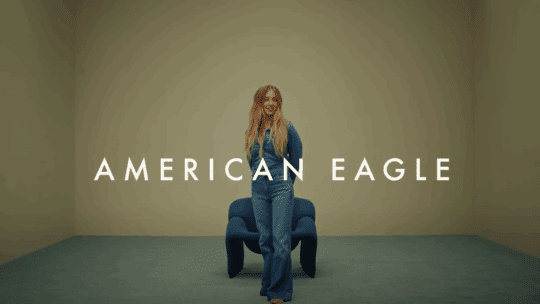
For years, brands and public figures operated under the looming threat of cancel culture. Staying awake at night with the fear that one wrong move, one viral misstep, could ignite a digital firestorm and permanently damage a reputation. PR teams were trained to brace for backlash, issue swift apologies, and retreat to safer ground.
But something has changed.
Today, we’re seeing companies caught up in culture war crossfire adopt different strategies. When a brand’s statement or action or advertisement inadvertently provokes a cultural backlash from certain sectors of their market, rather than apologize and go underground, companies are embracing the challenge, using it to energize new market opportunities and burnish their reputation with new audiences. When challenged by culture warriors, brands increasingly explore how to turn national polarization into a business advantage.
The American Eagle and Sydney Sweeney Example
Take the recent American Eagle campaign featuring actress Sydney Sweeney. While the visual style leaned heavily into nostalgic Americana, it was a caption referencing Sweeney’s “good jeans” that ignited backlash. Critics called the language racially coded, tone-deaf, and reflective of exclusionary ideals associated with far-right cultural narratives. The campaign was accused of veiling extremism in feel-good patriotism, whether intentionally or not.
Rather than acknowledge the concerns raised, American Eagle issued a brief statement saying: “The campaign is and always was about the jeans. Her jeans. Her story… Great jeans look good on everyone.” The brand framed the ad as a message about confidence and inclusivity but did not directly engage with or respond to the deeper criticism.
The backlash triggered a wave of online counter-messaging: the hashtag #IStandWithSydney trended, and defenders, many of whom weren’t previously vocal brand loyalists, rushed to shield her from so-called “cancelation,” despite no organized campaign to actually cancel her.
Meanwhile, during the brand chaos, American Eagle saw a spike in social engagement and a boost in stock value, benefiting from the visibility even as it avoided engaging in a meaningful conversation about the campaign’s implications. Even President Donald Trump threw his support around the brand and Sweeney, herself.
We’ve seen similar playbooks emerge across sectors:
- Chick-fil-A’s long-criticized values haven’t hurt sales; they’ve helped solidify loyalty among conservative consumers.
- Nike’s campaign with Colin Kaepernick was polarizing by design, creating both condemnation and a record-breaking stock boost.
- Gillette’s campaign calling out toxic masculinity sparked backlash but also repositioned the brand and earned over $200 million in media value.
- Ben & Jerry’s outspoken political stances have alienated some, but built deep loyalty among progressive consumers who expect brand activism.
The New Crisis Playbook
This moment demands a rethinking of the traditional crisis communications playbook. It’s no longer enough to just monitor and respond. In a climate where brands are becoming lightning rods, sometimes intentionally, the new skill is mobilizing your allies in real time.
Here's the new reality:
Crisis communications is not just about managing your critics and weathering a storm. The right strategy may be to mobilize new supporters and attempt to bring more people into your narrative, reflect your corporate values, and ultimately, be visibly supported by the audiences you want to retain or attract. Crises are no longer defined by what someone says or does. It’s how the brand chooses to navigate the reaction.
For risk-averse companies, that may require a shift in both mindset and strategy.
-
Anticipate the Flashpoints
Brands must stop pretending they're surprised by backlash. If you’re putting Sydney Sweeney in cowboy boots under the stars and planting her in the middle of America’s culture wars, you know what’s coming. Use market research to prepare your rebuttal messaging, and be ready to pivot. Create the narrative response in advance to give the news media a different angle to cover, but give your fans and influencers content to make it easy for them to defend you on message.
-
Arm Your Allies Before the Headlines Break
Your loyalists—whether customers, ambassadors or partners, shouldn’t be caught off guard. They should be activated. Brief them in advance if a controversy is possible. Share internal values statements. Provide FAQs. Give them the language to respond confidently, before critics dominate the conversation.
-
Treat Defense as a Core Communications Strategy
Crisis communications used to be reactive: apologize, explain, retreat. Today, it’s reactive and responsive. It’s not just playing defense but leveraging unintended controversy into an offensive strategy. Identify who will defend you. Equip them. Repost their comments. Show that the brand isn’t just surviving the moment—it’s choosing to remain visible, even if that means sidestepping valid criticism. American Eagle’s handling of the backlash followed this playbook: letting supporters reframe the conversation while avoiding direct engagement with the substance of the controversy.
-
Monitor Both Outrage and Advocacy
Your social listening shouldn’t just track negative sentiment. It should also identify your defenders, who’s speaking up for you and how. Are they aligned with your brand voice? Are they credible? How can you amplify them without fanning the flames?
-
Reputation Management Is a Team Sport
The difference between surviving and spiraling isn’t about quieting the people who are outraged. It’s about empowering and activating vocal supporters who speak up for you. Silence is risk. Critics will fill the vacuum with their own point of view. But loyalty is currency that can be leveraged to balance the narrative.
Turn Crisis Into Opportunity
For most companies, the standard risk management strategy is to avoid controversy and anything that will threaten your market position. But when confronted with controversy that piques the public’s fascination, companies and institutions can learn to thread the needle, and turn a crisis into an opportunity to attract new customers, engage new supporters, and even create new market opportunities.
So, are we in the opposite of cancel culture?
Not quite. But we’re definitely in a new era. One where polarization is performance, backlash is a strategy, and your defenders matter more than your critics.
American Eagle’s decision not to engage with the substance of the criticism reflects a growing trend: treating controversy as a commercial opportunity, rather than a reputational threat. It’s not a resolution. It’s a redirection.
It’s time to update the playbook.
Meghan Tisinger is Managing Director at Leidar USA.
